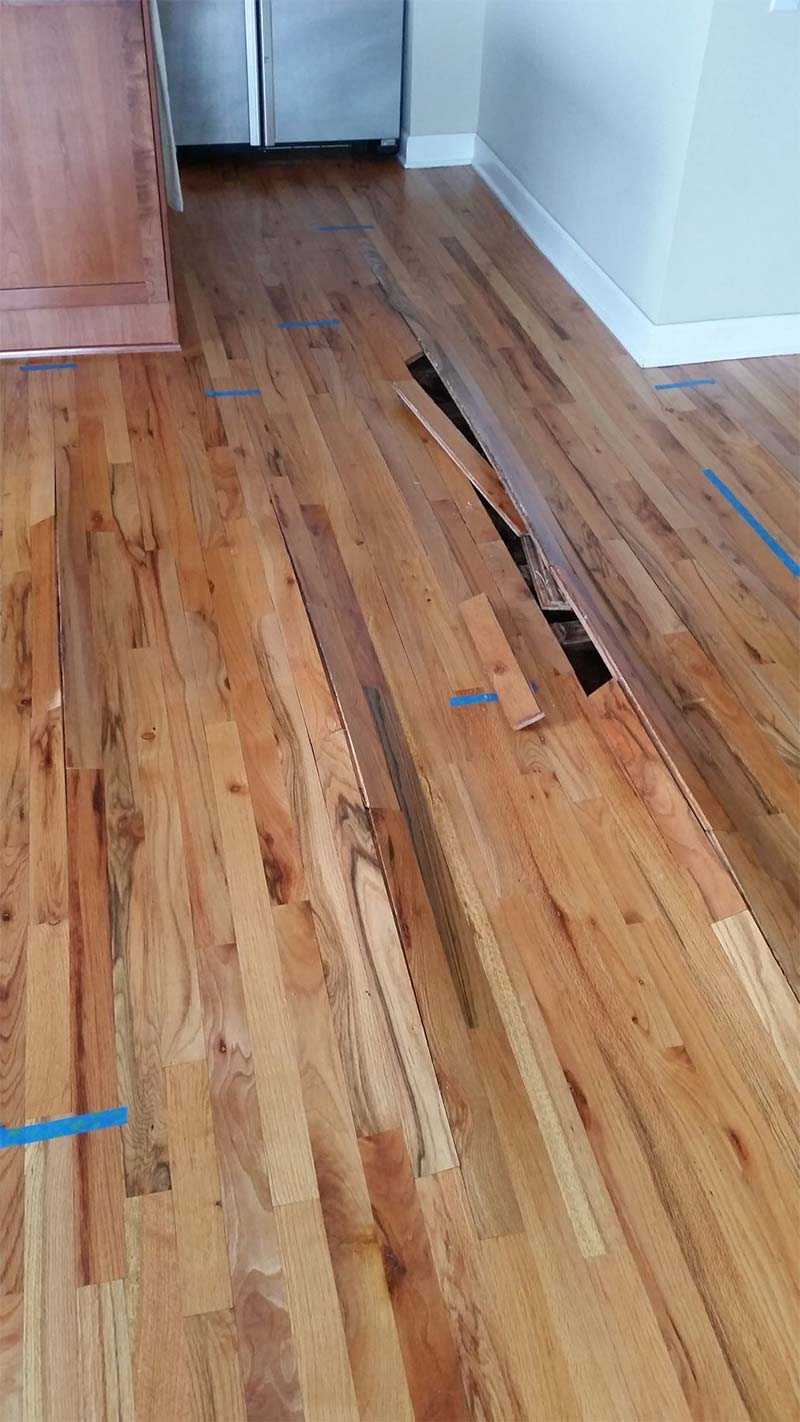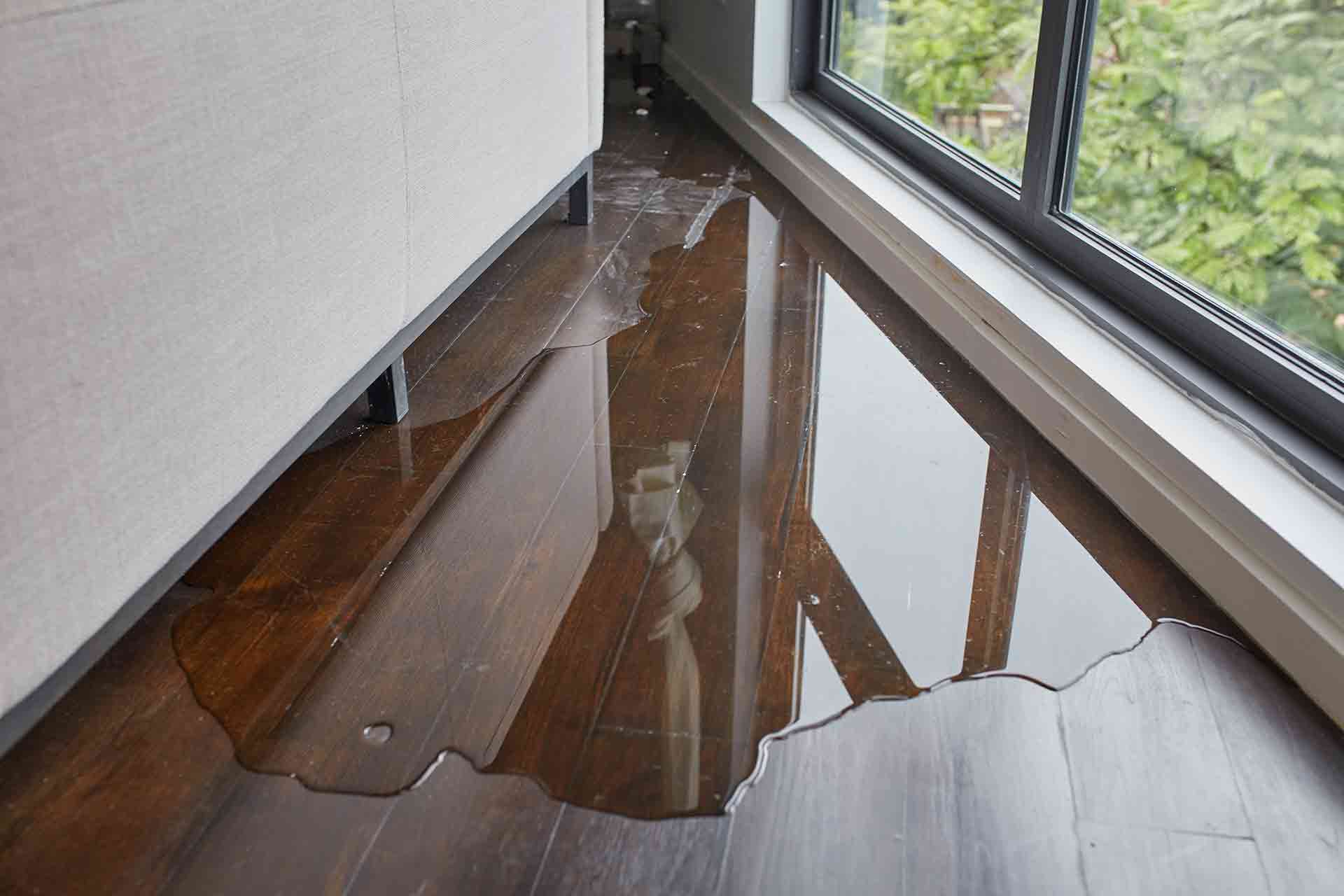Imagine this: You walk into your home after a heavy rainstorm, only to find a devastating scene. Water has seeped in, leaving behind a trail of destruction, and your beautiful hardwood floors, the heart of your home, are warped, swollen, and discolored. Your heart sinks. Is it all lost? Can water damaged wood floors be fixed?

Image: parquetave.com
The answer, thankfully, is often yes. While the damage may seem overwhelming at first, understanding the causes, types, and potential repair options for water-damaged wood floors can empower you to make informed decisions and potentially restore your home’s beauty.
Understanding the Damage:
Water and wood are a tricky mix. When water seeps into wood floors, it can cause a range of problems depending on the severity of the damage and the type of wood. Here’s a breakdown of the common culprits:
- Warpage: Water causes wood to expand, leading to warping and buckling. This is often the most noticeable sign of water damage.
- Cupping: If water is trapped beneath the flooring, the wood can cup, creating rounded edges and a noticeable hump.
- Mold and Mildew: Dampness provides the perfect breeding ground for mold and mildew, which not only damage the wood but also pose health risks.
- Rot: If water remains trapped for prolonged periods, it can cause wood rot, leading to structural instability and potentially requiring replacement.
The Types of Water Damage:
Understanding the source of the water damage is crucial for identifying the best repair options:
- Standing Water: This occurs when a significant amount of water pools on the floor for an extended period. This is the most severe type of damage and often requires extensive repairs.
- Leaking Pipes: Leaks from pipes, appliances, or plumbing fixtures can cause localized damage.
- Flooding: This includes damage caused by heavy rain, sewer backups, or natural disasters.
Can Water Damaged Wood Floors Be Fixed?
The answer to this question depends on the severity of the damage and the type of wood. Here’s a breakdown of potential solutions:
-
Minor Damage: For minor warping and cupping, sanding and refinishing might be sufficient. This involves removing the damaged surface layer and applying new coats of finish.
-
Moderate Damage: If the damage is more severe, you may need to replace damaged boards or sections of flooring. This process involves carefully removing the damaged boards and replacing them with new ones, ensuring a seamless transition.
-
Severe Damage: In cases of extensive water damage, particularly where rot is present, complete replacement might be the only option. This will involve removing the existing flooring and installing new boards.
When to Call a Professional:
While DIY repairs for minor water damage might be possible, it’s always best to consult with a professional for moderate to severe damage. Here’s why:
-
Expertise: Professionals have the experience and knowledge to accurately assess the damage, determine the best repair method, and ensure proper moisture control.
-
Safety: Removing and replacing water-damaged floorboards can involve hazards like mold spores, so it’s crucial to have the proper equipment and training. They’ll also be knowledgeable about working with proper ventilation to prevent further issues.
-
Quality: Professionals use high-quality materials and techniques to ensure a long-lasting and aesthetically pleasing result.
Expert Insights and Actionable Tips:
-
Act Quickly: The longer water stays in contact with your floors, the more extensive the damage becomes. Address the source of the water immediately and begin the drying process.
-
Check for Mold: Thoroughly inspect the affected area for signs of mold growth, which can be harmful to your health. If you suspect mold, contact a professional mold remediation specialist.
-
Prevent Future Damage: Take preventative measures to minimize the risk of water damage. This includes regular inspections of plumbing, ensuring proper ventilation, and implementing a water damage mitigation plan.
Conclusion:
Water damage to wood floors is a common issue, but with the right knowledge and action, it doesn’t have to be a disaster. By understanding the causes, types, and potential repair options, you can make informed decisions about restoring the beauty of your hardwood floors. Remember, for severe damage, seeking professional guidance can save you time, money, and ensure a safe and effective repair. So, embrace the resilience of your hardwood floors and take the necessary steps to restore them to their former glory.

Image: viewfloor.co
Can Water Damaged Wood Floors Be Fixed






